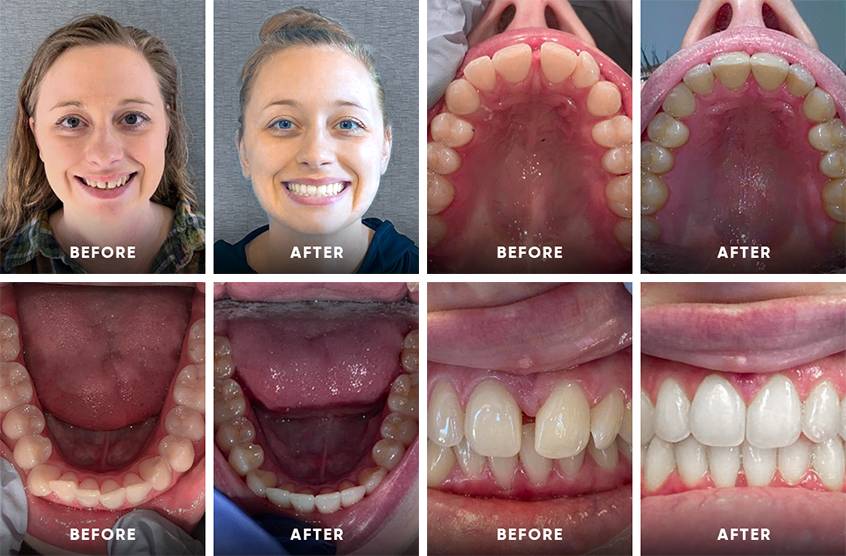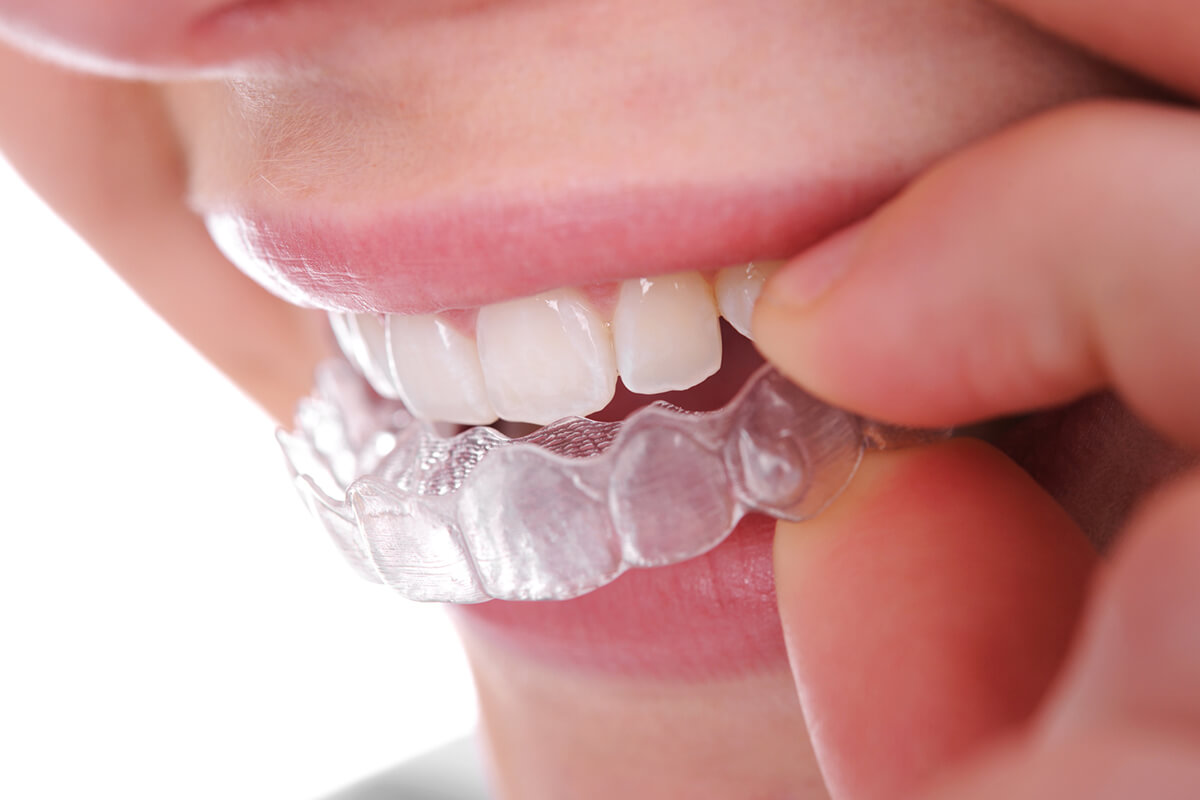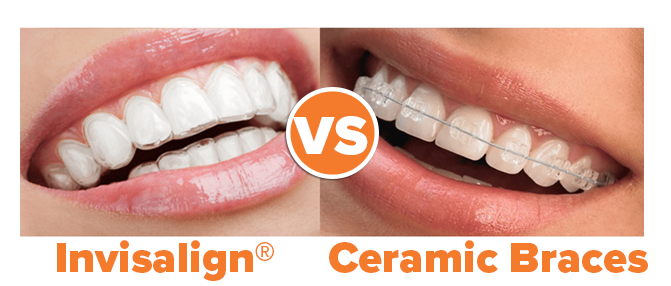Top Reasons to Pick Invisalign Over Other Orthodontic Treatments
Top Reasons to Pick Invisalign Over Other Orthodontic Treatments
Blog Article
Invisalign vs. Traditional Dental braces: Which Option Is Right for You?
When thinking about orthodontic therapy, the selection between Invisalign and standard braces provides numerous crucial elements that warrant cautious analysis. Invisalign provides a very discreet option with removable aligners, while standard braces provide a much more noticeable yet effective option for severe misalignment.
Review of Treatment Alternatives

On the other hand, standard braces contain metal braces and wires that are bonded to the teeth. This approach applies constant pressure over time to accomplish alignment. While efficient for complex orthodontic problems, typical braces require normal sees for adjustments and can pose obstacles in preserving oral health as a result of the problem of cleaning up about brackets and cords.
Both options have their qualities, and the choice typically depends upon details dental problems, way of life choices, and client conformity. Eventually, seeking advice from an orthodontic expert is essential for determining one of the most appropriate treatment plan customized to specific needs. Understanding the nuances of each choice can significantly affect the total success of orthodontic treatment.
Aesthetic Factors To Consider
A substantial variable influencing the choice in between Invisalign and standard braces is the visual charm each treatment supplies. Invisalign aligners are crafted from clear plastic, making them basically undetectable when put on.
In comparison, conventional braces are composed of steel braces and cables, which can be extra recognizable. While improvements in orthodontic modern technology have resulted in the growth of smaller brackets and colored elastics, traditional braces still keep an even more conspicuous profile. For some individuals, the presence of dental braces might prevent them from seeking essential treatment.
Eventually, the choice in between Invisalign and traditional dental braces might rest on individual preferences regarding aesthetics. Individuals who prioritize discretion often lean towards Invisalign, while those who are much less concerned concerning exposure may go with typical braces. Understanding the aesthetic effects of each choice is important for making a notified decision that aligns with one's way of living and choices.
Convenience and Convenience

In regards to ease, Invisalign aligners are removable, allowing people to enjoy their favorite foods without limitation and preserve optimal oral hygiene. Cleaning and flossing are streamlined, as the aligners can be secured throughout these routines, whereas typical braces call for cautious maneuvering around cords and brackets.
In addition, Invisalign's progressive system permits less orthodontic gos to. Individuals typically receive numerous sets of aligners simultaneously, which can improve the therapy procedure and minimize time spent in the orthodontist's chair. On the other hand, traditional braces necessitate normal modifications, making them less convenient for those with active schedules. Invisalign. Overall, the comfort and ease of Invisalign make it an attractive selection for numerous people seeking orthodontic treatment.
Treatment Duration and Effectiveness
While both Invisalign and conventional braces work in fixing dental imbalances, the duration of therapy can vary considerably in between the two choices. Commonly, Invisalign treatment can take anywhere from 12 to 18 months, depending upon the complexity of the situation. The clear aligners function by gradually changing teeth right into their desired positions, and normal follow-ups with an orthodontist help guarantee development continues to be on the right track.
On the other hand, standard braces commonly need a longer commitment, typically varying from 18 months to three years. This is due to their fixed nature and the usage of cables and brackets, which can be a lot more reliable for extreme imbalances and complicated situations (Invisalign). The treatment effectiveness of standard dental braces is well-documented, as they enable precise adjustments and better control over tooth movement
Eventually, the selection in between Invisalign and standard braces may hinge on both the awaited treatment duration and the specific oral problems available. Consulting with an orthodontist is essential, as they can provide customized suggestions based on click here now specific needs, guaranteeing the chosen approach straightens with preferred results and timeframes.
Expense Contrast and Insurance Choices
Expense plays a substantial function in the decision-making procedure for individuals thinking about orthodontic treatment, whether choosing Invisalign or standard dental braces. On average, the cost of Invisalign ranges from $3,000 to $8,000, while traditional braces generally cost between $2,000 and $6,000. Aspects influencing these expenses include the intricacy of the situation, the period of treatment, and geographical place.
Numerous dental insurance coverage plans give partial insurance coverage for orthodontic treatments, yet the specifics can differ extensively. Typically, standard braces may be a lot more frequently covered by insurance policy plans compared to Invisalign, which some insurance firms categorize as a cosmetic procedure.
In addition, a number of orthodontic methods provide flexible layaway plan, making both therapy choices much more easily accessible. Individuals need to ask regarding possible funding alternatives and price cuts for in advance payments. Examining the total cost, consisting of insurance coverage benefits and layaway plan, is essential for making an educated decision that aligns with both visual preferences original site and spending plan considerations.

Final Thought
In summary, the selection between Invisalign and typical dental braces rests on multiple aspects, including aesthetic preferences, convenience, treatment duration, and cost. Invisalign offers a discreet, removable alternative that facilitates oral hygiene and nutritional adaptability, while standard dental braces might be a lot more ideal for complex oral issues and usually come at a lower cost factor. Inevitably, consultation with an orthodontist is important to assess private scenarios and figure out one of the most ideal therapy option for accomplishing optimal read what he said dental positioning.
When considering orthodontic treatment, the choice between Invisalign and traditional dental braces offers several essential aspects that warrant cautious evaluation.Comparing Invisalign and standard braces discloses distinct therapy options for orthodontic modification.While both Invisalign and conventional braces are effective in fixing dental misalignments, the duration of therapy can differ significantly in between the two alternatives.Price plays a considerable duty in the decision-making process for individuals taking into consideration orthodontic treatment, whether opting for Invisalign or typical braces.In recap, the choice between Invisalign and traditional dental braces pivots on multiple factors, consisting of visual preferences, convenience, therapy duration, and price.
Report this page